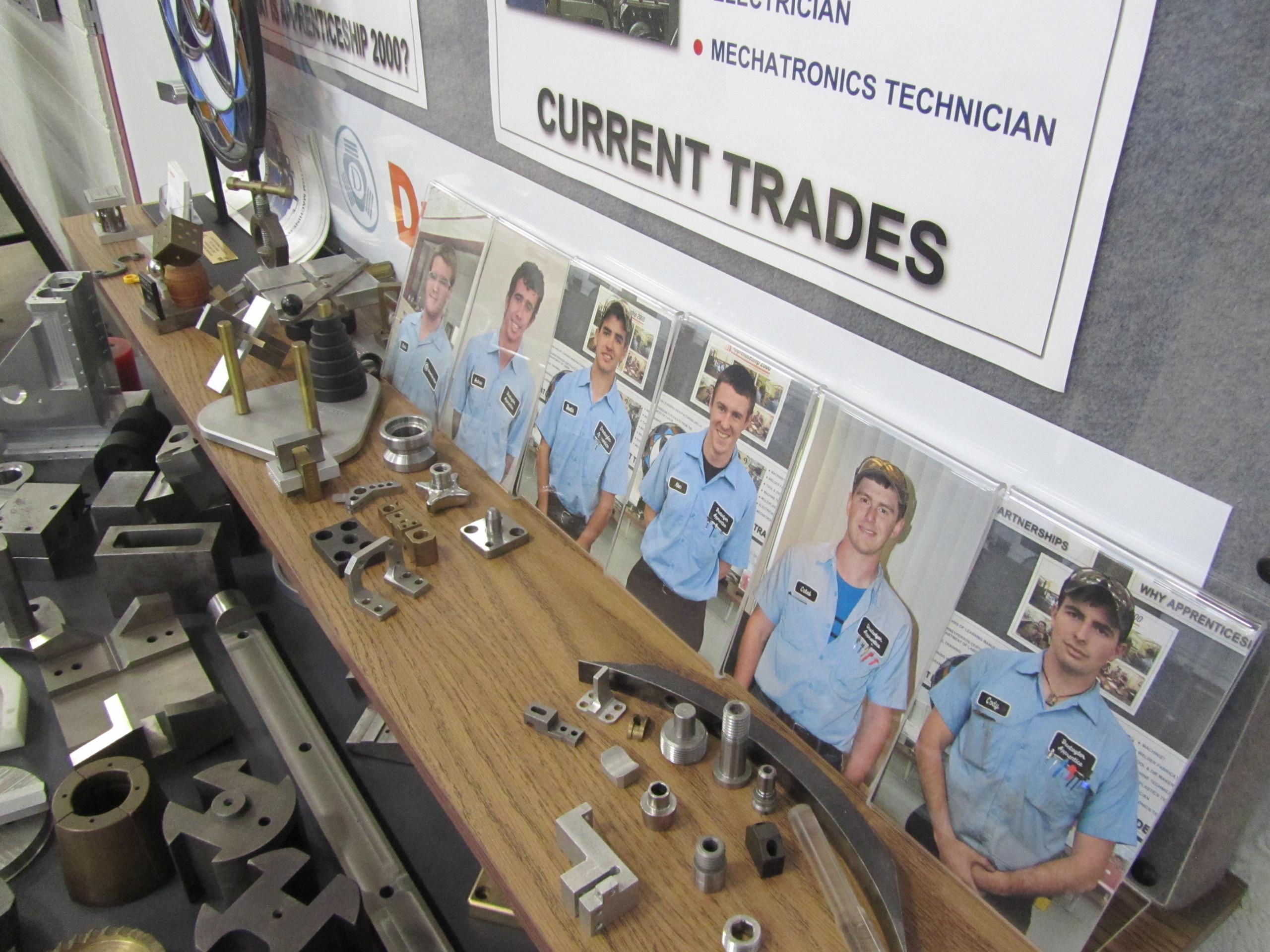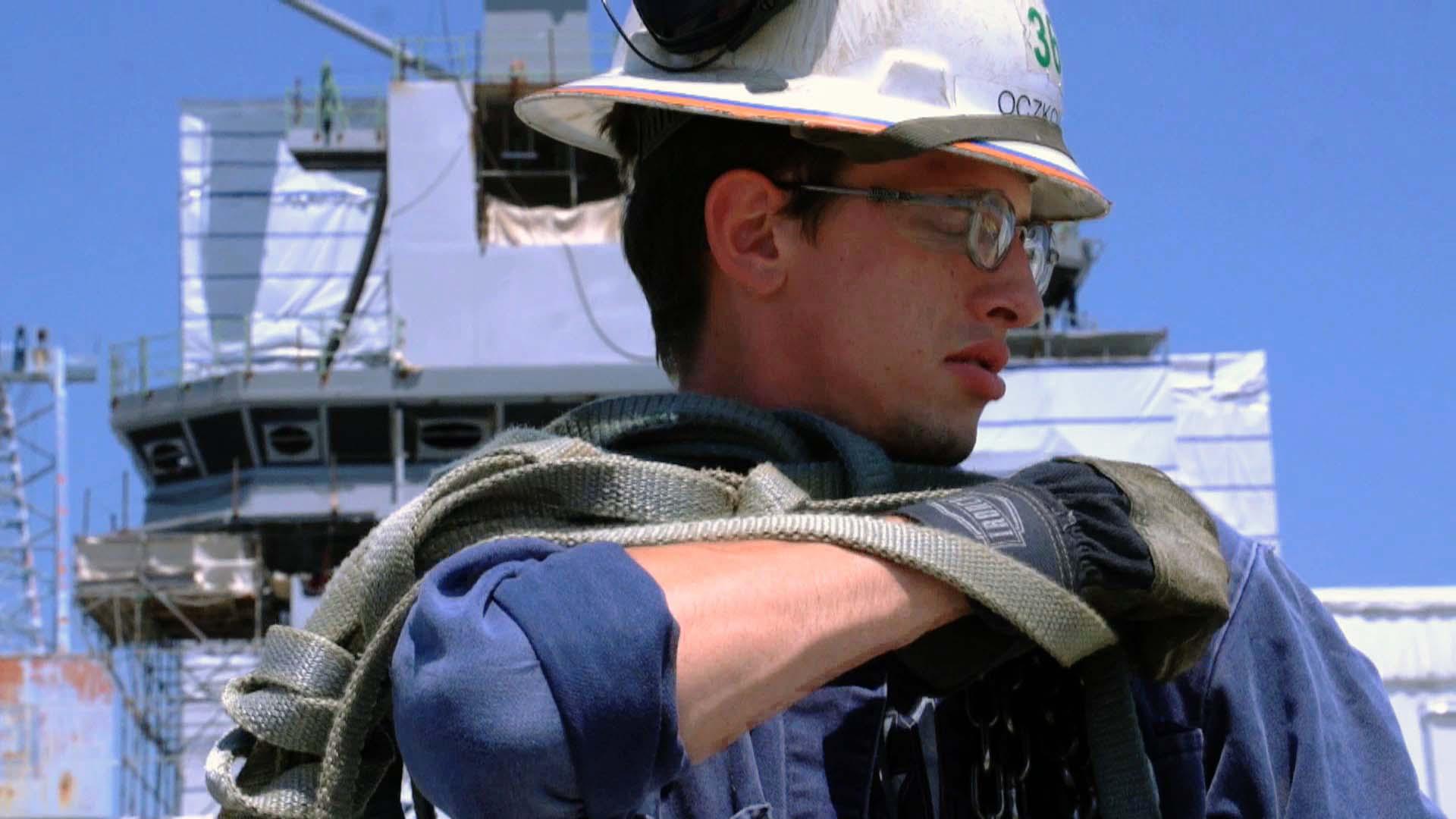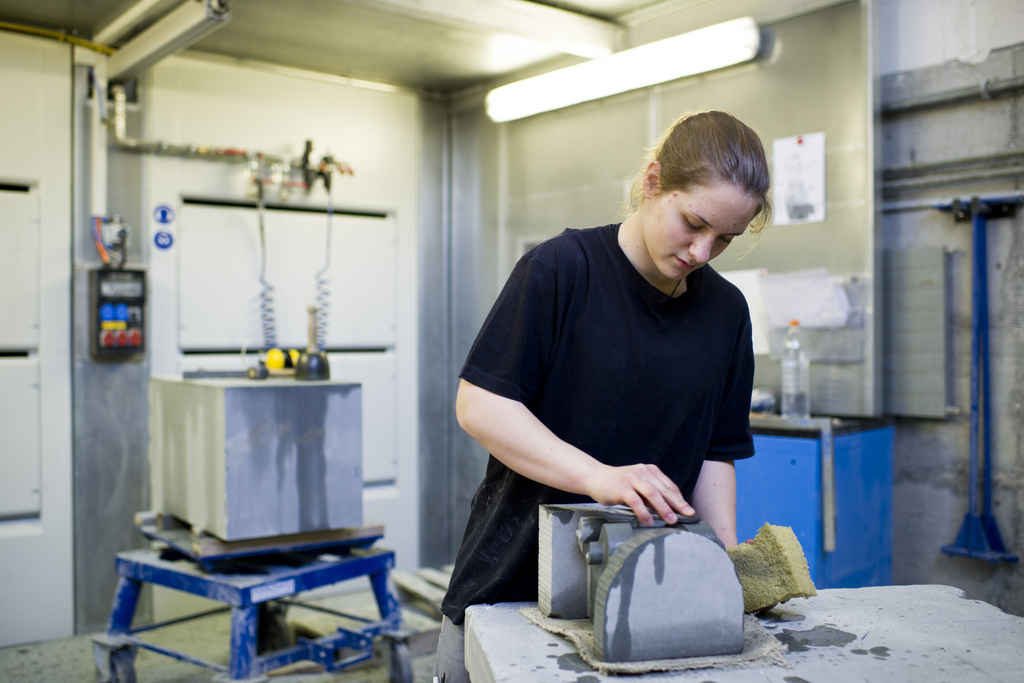The American apprentices who build warships

Michael Fahy never imagined his job – and his education – would involve crawling underneath an aircraft carrier powered by two nuclear reactors. But after college funds ran dry, his career took a new direction via a nearly century-old apprenticeship programme. It’s something the United States would like to develop more of.

More
Short on workers, a Swiss company trains them stateside
Lining the mouth of Virginia‘s James River where it flows into Chesapeake Bay and the Atlantic Ocean, the city of Newport News exists because of shipbuilding. Its slightly rough-around-the-edges downtown is built along the water, with the ghostly outlines of dry docks and shipbuilding cranes visible in the distance. And at 24,000 strong, the employees of Newport News Shipbuilding who build nuclear-powered submarines and aircraft carriers for the US military on those docks make up a city of their own.
But the right workers for the task can be hard to find; building a ship requires qualified pipefitters, electricians, welders and machinists. Enter The Apprentice School, founded in 1919. At the time, classes were held in a barn for the all-male student body. Today, 17% of apprentices are women, and the school’s gleaming new campus occupies 90,000 square feet in the middle of Newport News’s dockside main street. It feels like an elite university, summer camp and factory town all rolled into one.
“I like to think of The Apprentice School as an education with a true purpose,” says Everett Jordan, the director of education at Newport News Shipbuilding, as he shows off the trophy case of apprentices’ achievements in the building’s main lobby. “So many colleges and universities today can’t really say that, but we can say that and back it up.”
The school “backs it up” by paying graduates for their work during their education and guaranteeing them a job in the shipyard when they’re done with the four-year programme. Apprentices spend a total of 1,000 hours in the classroom, with academic instruction in everything from mathematics to drafting and computer programming, depending on which of the 19 available trades they choose. Those include jobs like machinists, pipefitters, welders and heating and air conditioning workers. Then, apprentices spend another 7,000 hours in the shipyard, working on their specific jobs with a mentor’s guidance.

More
Shipbuilding apprentices on the job
As Jordan proudly continues the tour of the school, its physical similarities to a university campus or a military academy are clear: a gymnasium here, classrooms and apartments for students there. The school fields athletic teams in football, basketball and wrestling, among other sports, and as many as one third of students are recruited as student athletes who play for the school’s mascot known as the “builders”.
But even though The Apprentice School looks and feels like a university, Michael Fahy’s family and friends didn’t view it as such when he dropped out of college, struggled to hold down a job and finally decided to become an apprentice.
“In my family, you’re either going to college or into the military,” he says, adding that his relatives felt a “bias against manufacturing” because of some of the “horror stories” they experienced working in the sector themselves.
“Apprenticeships had the connotation of being dirty, a manual labour job,” he adds. “I was told, ‘don’t worry about doing that, you’re going to college.’”
The Apprentice School has found itself fighting the same battle. Its answer is to raise the profile of vocational training by attracting only top students – the same ones who would otherwise be considering going to a four-year college. But it’s a constant information war, according to Jordan.
“The information portrayed about apprenticeships has been poorly advertised,” he says, adding that recruiting students who would otherwise be college material is essential because setting the bar too low “would leave a lesser impression of apprenticeships “etched in people’s minds”.
Apprenticeship academy
Getting into The Apprentice School is highly competitive: last year, only 223 students got accepted out of 4,136 applicants. And life as an apprentice is demanding, since aside from 40 hours of classes and work per week, there are extracurricular clubs and athletics to take part in and events like character-building workshops that teach everything from financial management to how to eat a business lunch.
Like in Switzerland, the number of apprentices in the programme is based on economic need – 144 graduated in 2014, but there could be more or fewer year-to-year depending on what kind of work Newport News Shipbuilding gets from the US government.
But otherwise, The Apprentice School is an altogether different model than in Switzerland, where vocational training is overseen by the government and widespread among many career paths. Most students who want one land an apprenticeship somewhere – even if it’s not their first choice. And Swiss students tend to be only about 16 years old when they begin vocational training, while at The Apprentice School, more and more older students with some university experience are enrolling and the average student age is 25.
Plan B
One of them is Elise Feldt. She tried the college route, first as a theatre major at nearby Christopher Newport University with dreams of becoming a playwright. But when that path didn’t lead to steady employment, it was time for Plan B.

“Straight out of high school, I had dreams and aspirations but no experience knowing how the real world and real jobs work,” says Feldt, who, at age 29, is now raising two kids as a single mom. “When I was abruptly introduced to that by starting a family and moving out on my own, I realised that I needed so much more.”
So Feldt applied to The Apprentice School and is now training to be a pipefitter, building nuclear-powered submarines and aircraft carriers. She’s also involved in the robotics club and has emerged as a student leader who’s always on the go.
She admits it’s hard to juggle all of that with responsibilities to her children, and the school doesn’t offer anything in the way of child care or specific support for mothers – although many students do have families.
It’s all worth it, Feldt emphasises, because in the end she can earn an Associate’s Degree and go on to earn a Bachelor of Science degree if she chooses, in partnership with a nearby university. Then there are the unique experiences, like her favourite memory of working alongside an experienced pipefitter in the shipyard when the water mains froze.
“He would go up there and try to break the lines loose, get the water flowing through them so we could get water pressure flowing to the system,” she said. “Once he pulled a pipe off and got himself completely drenched in ice water, but he stuck it out. We’re still friends to this day.”
But perhaps most importantly, in the end, she’ll have a steady job at Newport News shipbuilding.
Going further
Through actions like recently investing $100 million (CHF94.4 million) – the most ever – into apprenticeship programmes and hosting Swiss Economics Minister Johann Schneider-Ammann at a recent White House roundtable, US President Barack Obama’s administration is trying to make more people aware of how apprenticeships can lead to good jobs and raise their profile among the public.
In his recent State of the Union address to Congress, Obama asked “more businesses to…offer more educational benefits and paid apprenticeships – opportunities that give workers the chance to earn higher-paying jobs even if they don’t have a higher education.”
But Jordan believes businesses should go even further, paying for apprentices to get access to a university education. The Apprentice School, he says, is the only registered apprenticeship programme in the US that lets students earn a bachelor’s degree on company time.
“We don’t want apprenticeship or college,” he says. “We want both.”
All told, Newport News Shipbuilding spends $273,000 in earnings, company benefits and tuition value on every apprentice over the course of the four-year programme. The only cost to students, according to Student Services Manager Dan Brookman, are a pair of sturdy shoes and safety glasses. But what they spend on training they get back in loyalty, he says: about 14% of the company’s workforce is made up of former apprentices, and 82% of alumni stay with the company for at least ten years after graduating.
Changing minds
And what does Michael Fahy’s family think of his decision to pursue an apprenticeship now? Little by little, he has been able to convince them that his decision was the right one.
“It was not easy, it’s a lot of stereotypes to break, a lot of misinformation that was given,” he says. “Being in an apprenticeship opened my eyes to a whole other world that’s never talked about, and that’s kind of sad.”
“My family was not happy when I started, but now that I’m living on my own, they’re definitely impressed.”

In compliance with the JTI standards
More: SWI swissinfo.ch certified by the Journalism Trust Initiative




You can find an overview of ongoing debates with our journalists here. Please join us!
If you want to start a conversation about a topic raised in this article or want to report factual errors, email us at english@swissinfo.ch.